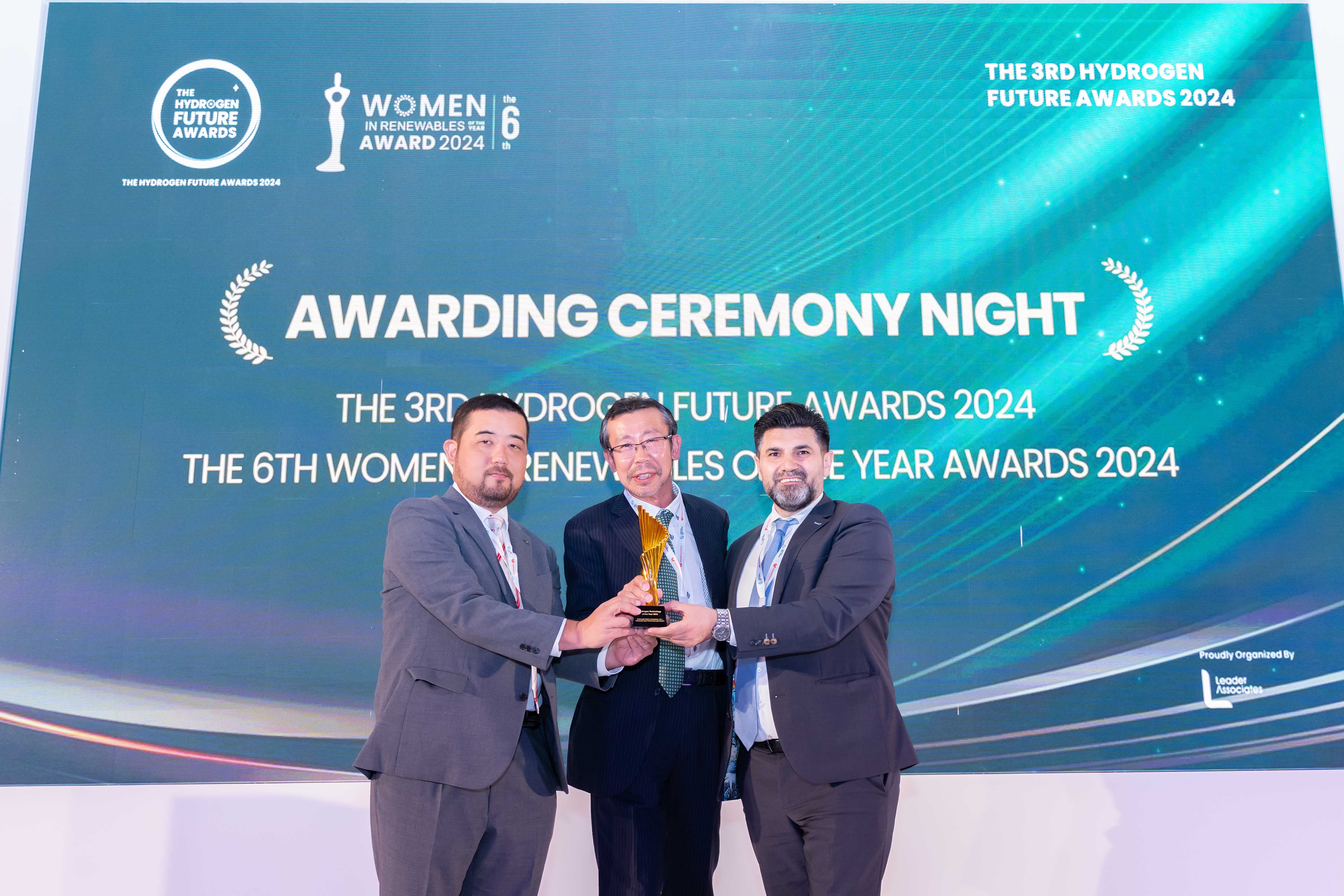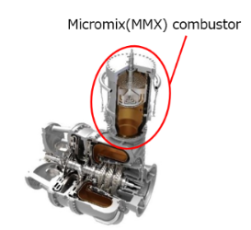GPB17MMX 1.8 MW Class Hydrogen Gas Turbine Wins Hydrogen Technology of the Year 2024 at Connecting Green Hydrogen MENA 2024.
Apr. 24, 2024


Tokyo, April 24, 2024 — Kawasaki Heavy Industries, Ltd. announced today its receipt of the Hydrogen Technology of the Year Award in one of eight categories at Connecting Green Hydrogen MENA’s Hydrogen Future Awards 2024 for the company’s GPB17MMX 1.8 MW class 100% hydrogen-fueled, dry-combustion gas turbine. Connecting Green Hydrogen MENA is the largest hydrogen-related event in the Middle East, bringing in more than 3,000 participants from upwards of 50 different countries, including industry decision-makers, energy-related government ministers and corporate representatives. The “Hydrogen Technology of the Year” category acknowledges the advanced technologies, solutions and digital innovations that were developed that year and have positively impacted the hydrogen industry in aspects of production, storage, transportation and usage.
Hydrogen fuel offers the advantage of zero CO2 emissions during combustion. However, it has a faster combustion velocity and higher combustion temperature than natural gas, which creates problems such as increased NOx emissions and overheating of combustor components.
Kawasaki has addressed these shortcomings by developing and commercializing the world’s first 100% hydrogen-fueled, dry-combustion combustor (“MMX combustor”)*1 which utilizes a proprietary combination of Micromix combustion*2 and supplemental combustion.*3 Use of this product enables stable, clean combustion of hydrogen and hydrogen-mixed fuel with natural gas that is in compliance with the Air Pollution Control Act. Furthermore, during mixed-fuel combustion, the system’s hydrogen ratio is freely changeable between 50 and 100% in volume, which enables flexible operational responses to hydrogen supply fluctuations.
This latest award receipt represents high praise for Kawasaki’s major contributions to CO2 reductions through commercialization of the world’s first 100% hydrogen-fueled, dry-combustion gas turbine with a Micromix combustor.
By 2030, the company plans to include its MMX combustor in all cogeneration systems and grid-regulating power supply gas turbines that it sells. This is part of Kawasaki’s efforts to build hydrogen supply chains—encompassing all phases including production, transportation, storage and utilization—with an eye toward widespread hydrogen energy dissemination in the future. Electric power generation accounts for a large portion of the global CO2 emissions, which is why gas turbines play a vital role in efforts to eliminate carbon emissions throughout the “utilization” phase. Therefore, Kawasaki plans to further accelerate efforts to develop combustion technology for gas turbines that use hydrogen fuel.
*1 Kawasaki’s MMX combustor utilizes technologies developed as part of the New Energy and Industrial Technology Development Organization's (NEDO's) Hydrogen Society Construction Technology Development Project (https://www.nedo.go.jp/english/activities/activities_ZZJP_100096.html). Specifically, the technologies were developed for the FY2019–20 'Development and Demonstration Project for Low-NOx Hydrogen-fueled Gas Turbine Combustion Technology, and the FY2021–22 Technology Development and Research to Establish a Regional Model for Hydrogen CGS.
*2 A proprietary combustion method developed by Kawasaki that uses small injection holes to spray fuel in small amounts and create numerous micro flames, which eliminates localized high-temperature zones to ensure consistently low NOx emissions.
*3 A proprietary Kawasaki approach in which fuel is injected downstream of the Micromix combustion zone as an additional fuel input. Power output of gas turbine can be changed by adjusting supplemental fuel while keeping the Micromix combustion stable, thus maintaining consistently low NOx emission levels.
About the Hydrogen Future Awards 2024
https://www.mena.gh2events.com/hydrogen-future-awards
- Launched the world's first 1.8 MW class dry hydrogen gas turbine cogeneration system.
https://global.kawasaki.com/en/corp/newsroom/news/detail/?f=20230905_2781 - Roadmap for hydrogen gas turbine development
https://global.kawasaki.com/en/energy/intro_hydrogen.html





